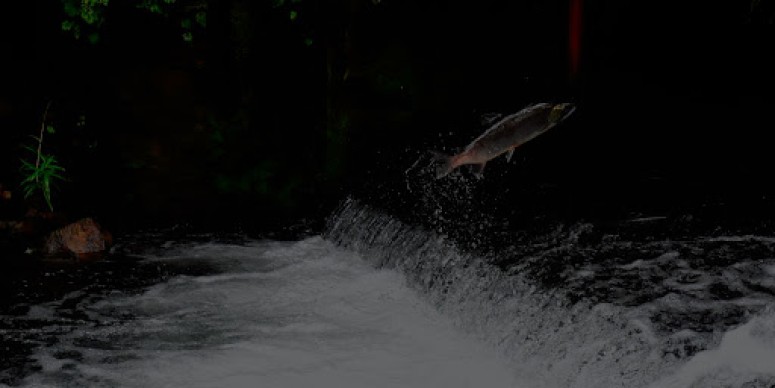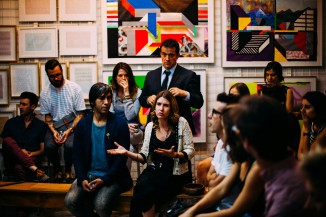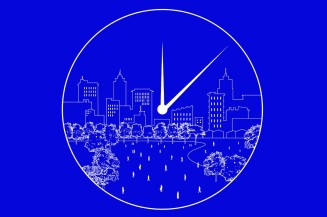Blog / Leadership & Transformation
Blockchain Fights Food Fraud: the Case of Norwegian Salmon
Categories

In today’s post, we take a rather industry-specific look at the use of blockchain in the Norwegian seafood sector as a new initiative spreads its wings. How can blockchain fight food fraud? As of June 2020, Blockchain and IoT technologies are being implemented to track the origin of salmon.
Blockchain technologies have imparted on yet another transparency mission. This time in Norway and to create a trustworthy track-and-trace system for sustainably farmed salmon. For this occasion, the Norwegian Seafood Association has teamed up with IBM and IoT technology firm Atea to launch the massive industry-wide project.
Salmon Fraud - A Trust Problem For a Billion-Dollar Industry
Norway is the world's second-largest exporter of fish and seafood after China. In 2017, fish and seafood stood for 7.9% of its export revenue while its export value reached NOK 94.5 billion (roughly USD 10.2 billion). In fact, the country exported more than 2.7 million tons of seafood in 2019, which is the equivalent of 25,000 meals per minute.
So, it’s no surprise that Norway’s fishing industry is looking for ways to establish traceability as a way to demonstrate and guarantee the quality of salmon that is in a way its national brand.
Blockchain and IoT for Food Safety
The solution proposed in Norway - using IoT for gathering data insights and blockchain for verified traceability of that data - is a winner combination for food safety. A Cointelegraph report When Blockchain Meets IoT: Ensuring Food Safety in the 2020s predicts that even if COVID19 doesn’t have any direct and contagious impact on food safety, the behavioral change it has brought along in consumers, will result in higher demand in safe and traceable food.
But it’s not only a question of demand, but rather an actual need. In case of fish the 25 – 70% of red snapper, wild salmon, and Atlantic cod are disguised by species that are less desirable, cheaper or more readily available. That’s why, most of the consumers would actually be willing to pay a little more for a product of verified origin.
Blockchain Network for Seafood
The Norway fish farming industry is no stranger to the accusations of fraud, of using antibiotics or polluting the sea with the food they use to catch fish. There have also suffered from incidents where other fish has been passed off as having come from farms in Norway. So introducing a network that would bear witness to the high-quality of the fish products was a long time coming.
A custom-made blockchain network will prove the provenance of sustainably by showing the journey of the fish from the ocean to the plate. The immutable nature of blockchain makes it the right technology for the job of recording and safeguarding what takes place in the region’s oceans and seas.
For the customers, a blockchain-based network will translate into the possibility to check out already in store the fjord where the fish was caught and when, the feed it has eaten and check out if the facility that grew the fish used sustainable methods.
Seafood Supply Chain on Blockchain: How Will It Work?
The initiative was brought to life by the collaboration between the Norwegian Seafood Association (Sjømatbedriftene), tech giant IBM and Atea, a local IT infrastructure provider for the Nordic and Baltic region.
From the technological side, IBM provides the underlying blockchain infrastructure while Atea will equip fish farms with the IoT devices. The blockchain network will run the system on IBM Cloud, similar to IBM’s Food Trust network in general. As you might now, IBM holds a considerable share of the blockchain solution market and has provided solutions from big players like Nestle to local coffee farmers. So, in addition to groundbreaking and game-changing, the blockchain-based network proposed in Norway is definitely built on a solid foundation.
Another important piece of the puzzle is IoT and the devices that register the supply chain events. The sensors and cameras will record details such as water temperature and what the fish are fed.
What’s also unique is the way the producers can have access to the service. Atea, as the contract holder with farms, won’t be charging the fish farms for the solution upfront but will opt for “paid for consumption” approach. This makes it also easier for smaller businesses and less tech-savvy farmers to join the network and try out its benefits.
In Summary
The initiative has taken off quickly as Atea has already signed six contracts and is in discussion with another 200 companies in Norway in regards to joining the network. This only shows that Norway’s seafood industry needed its own governance model for data sharing and access control a long time ago. And now it's here.
Start your journey and get involved in the Blockchain Revolution!





